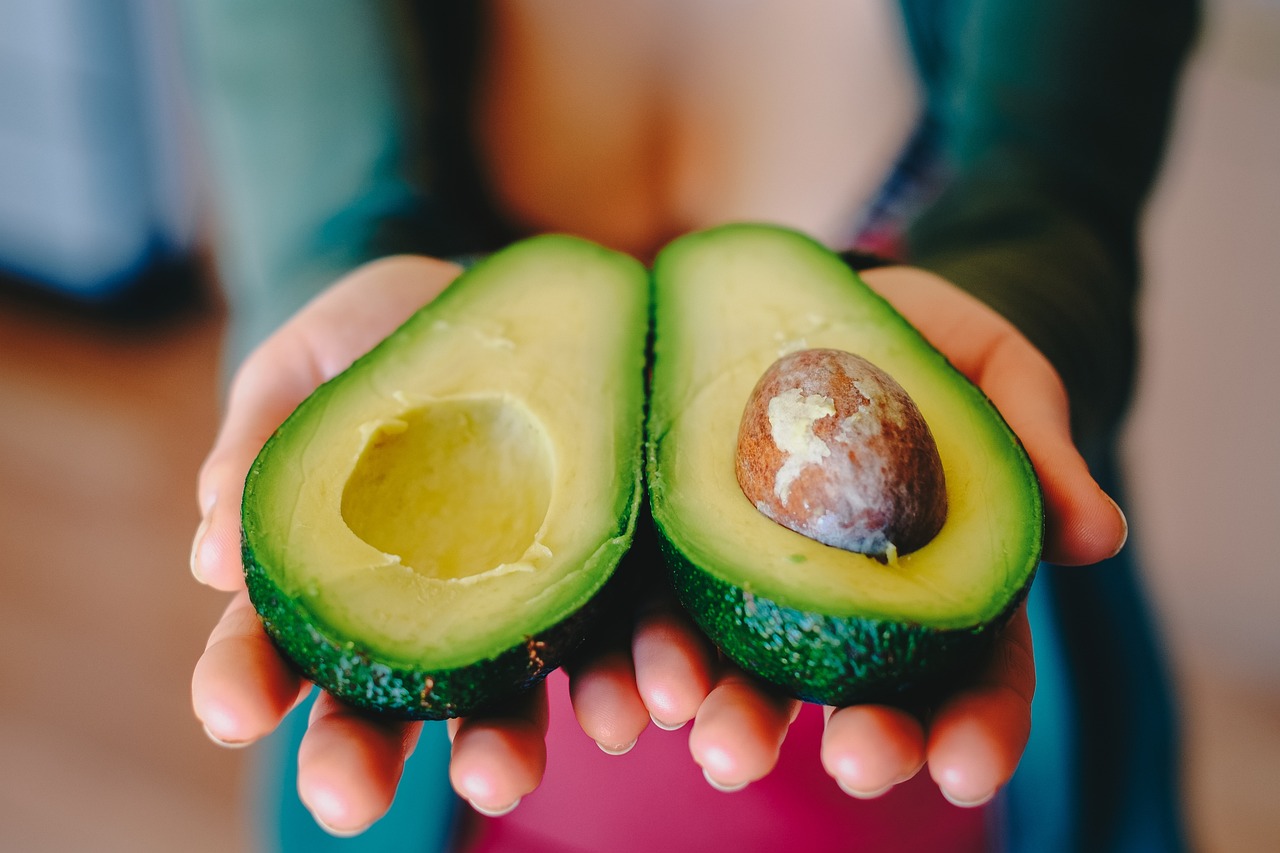It can be challenging for those with diabetes or pre-diabetes to keep their blood glucose levels in check. Many individuals spend significant stretches of time experimenting with different types of food to find out what works for them, which can be upsetting and burdensome.
Adjusting some central elements of your nourishment will assist in managing your blood sugar levels and diminishing the danger of diabetes and its linked difficulties. Certain dishes can lead to dramatic increases in blood sugar levels, while others aid in reducing it. Discovering which foods are beneficial to one’s health can initiate a different way of eating. Select food items with a Glycemic Index (GI) ranking that is under 55 or even lesser. These are the foods that will aid in controlling your blood sugar level.
Based on scientific findings, here are the foods to lower blood sugar:
-
APPLES
An apple a day keeps the doctor away. And rightly so!
Apples are incredibly healthy to eat as they include fiber that helps regulate blood sugar levels. This concoction is filled with a variety of plant substances such as gallic acid, quercetin, and chlorogenic acid, all of which could potentially decrease blood sugar levels.
Consuming apples consistently may assist in decreasing insulin resistance, which is a condition where the cells are not responsive to the insulin hormone. This then results in a decrease in the ability to use blood sugar, thus raising the sugar levels.
Apples have a low Glycemic Index (GI) of 39.
-
NUTS
Diabetics can benefit from consuming hazelnuts, macadamia nuts, almonds, cashews, pistachios, pecans, Brazil nuts, and also walnuts. In addition to reducing blood sugar levels, they possess an abundance of health advantages.
Nuts are beneficial because they contain beneficial fats that can lower unhealthy cholesterol (LDL) and raise healthy cholesterol (HDL). Since diabetes and heart disease have a strong tendency to go hand in hand (people with diabetes are two times more likely to suffer from it!), consuming nuts offers twofold advantages.
The Glycemic Index value for different types of nuts generally ranges from 14 to 21.
-
PLANT MILK
One more of our products for diminishing glucose level is milk, and we are not mentioning dairy milk.
Milk sourced from cows is high in calcium, proteins, and vitamin D, but it also has lactose, a type of sugar that is found naturally. The body can use this, resulting in an increase in blood sugar levels. Investigations have demonstrated a relationship between drinking milk and the likelihood of contracted type 2 diabetes.
In contrast, consuming vegetable-derived milk can assist in decreasing the amount of sugar in the blood. Some of the well-known kinds of plant-based milks come from soy, oat, almond, and rice.
If you still choose to go with a dairy milk, always pick skim milk because it has less sugar in it.
-
KIMCHI
Research has shown that an unexpected combination of foods can effectively reduce blood sugar levels.
Korean cuisine includes a classic food item called Kimchi, which is made out of fermented veggies such as cabbage and radish. It has numerous advantageous effects on health, including reducing insulin resistance.
Investigators discovered that eating kimchi (whether fresh or pickled) could bring about advantageous results for blood sugar metabolism when it was given to those with pre-diabetes. It was discovered that the aged kind could diminish insulin resistance and augment the receptiveness of the tissues to the hormone’s effect.
-
GRAPES
Many people wrongly believe that those who have diabetes should not consume grapes because of their sweet taste.
Grapes, similar to apples, have quercetin, resveratrol, and other elements that can bring down blood glucose levels by influencing how insulin is discharged and used by the body. Eating grapes has been shown to decrease the probability of getting diabetes.
The glycemic index (GI) of different types of grapes can vary from 43 up to 53.
-
LENTIL
Lentils possess a hefty quantity of both proteins and fiber, which are broken down gradually in the body. Eating lentils regularly may assist in controlling blood sugar levels as well as guarding against diabetes.
The Glycemic Index of lentils is 30.
-
PEARS
Research has suggested that eating pears can prove beneficial for those who are diabetic.
Research has been conducted on multiple individuals who are prone to diabetes. Investigators discovered that foods containing anthocyanin, pears in particular, are able to diminish the likelihood of developing an illness.
Eating fruits like pears and apples appears to decrease the possibility of getting type 2 diabetes by 18 percent.
A Glycemic Index score of 30 is associated with a medium-sized pear.
-
BERRIES
Berries are loaded with fibers, antioxidants, vitamins, and minerals. Ingesting them has been linked to better regulation of blood sugar levels.
Eating strawberries, blueberries, and blackberries can help to boost insulin sensitivity and clear out glucose from the bloodstream.
Eating a meal full of carbs along with 250 grams of raspberries was seen to make a noticeable difference in lowering blood sugar after the meal was consumed. The findings were acquired from an analysis conducted on people over 18 with prediabetes in contrast to those who didn’t have the condition.
Berries have a very low Glycemic Index rating (25), making them one of the top choices of food to help reduce blood sugar.
-
HUMMUS
Hummus boasts its position as a go-to snack for those with diabetes due to its reputation for helping to reduce blood sugar levels.
Hummus, which is produced from chickpeas, contains a lot of proteins, dietary fibers, a type of starch that is difficult to digest, and compounds that can limit the absorption of nutrients. The digesting and absorbing process is gradual, leading to a steadier increase and decrease in blood sugar levels.
The ADA suggests that people with diabetes should have one-third of a cup of food a day, particularly a combination of vegetables and items with small amounts of carbohydrates for a snack.
The Glycemic Index of Hummus is 6.
-
OILS: OLIVE AND COCONUT
Research has shown that having a diet that contains a lot of olive oil remarkably lowers both one’s fasting blood glucose and the amount of glycosylated hemoglobin (HbA1c) that is bound to a person’s hemoglobin.
Research has demonstrated that it can lower LDL and triglyceride levels, two types of unfavorable cholesterol that can lead to different heart illnesses in people with diabetes. The ADA suggests that increasing insulin sensitivity may be beneficial.
Coconut oil can help to maintain balanced blood sugar by boosting the body’s ability to use insulin.
[aad_coconut_oil]
-
AVOCADO
Avocados are among the 20 edibles that can reduce sugar in the blood. It lessens the rate of digestion and aids in averting a sudden rise of sugar after eating. This extravagant and smooth superfood is overflowing with monounsaturated fats that may help combat insulin resistance.
Studies have discovered that avocados can help decrease glucose levels in the blood. It could also potentially provide a shield against metabolic disorder conditions which increase danger of chronic sickness (like high sugar and blood pressure levels).
The Avocado Study
This study will investigate the effects of eating Hass avocados on the feeling of fullness, blood sugar and insulin levels, and the amount of energy consumed by overweight adults. The research will involve a 3×3 crossover design and randomization.
Background
Eating food has a complicated effect on behavior, which is shaped by psychological and biological elements. Avocados possess a considerable amount of nutrients that may help to maintain energy levels. This research was conducted to discover if adding or incorporating around half a Hass avocado into a lunch will change how full a person feels, their blood sugar and insulin levels, and how much they eat afterwards in overweight adults.
Methods
This research study randomly organized 26 overweight people (the average age was 40.8 with a normal deviation of 11.0, and average BMI 28.1 with a deviation of 2.4 kg/m2) into a 3×3 single-blind crossover design. After a set breakfast, study members ate 1 of 3 different lunches – Control, Avocado Inclusive, or Avocado Added. Subjects evaluated five hunger indicators on a graphical continuous scale before lunch and every five hours afterwards until the completion of the meal. The levels of blood sugar and insulin were checked prior to lunch and multiple times over the course of three hours subsequent to the beginning of the meal. Models combining various variables were utilized to distinguish between the 3 experiments, and the area under the curve (AUC0-xh) was worked out for the visual analog scale (VAS) and biological assessments.
Results
Statistically, the response to satisfaction and craving to eat varied significantly during the 0-5 hour period, as evidenced by the AUC(0-5h) in the mixed model analysis (P=0.04 and P=0.05, respectively). The AUC(0-5h) showed a 23% enhancement in satisfaction and a 28% reduction in hunger after consuming the AA test meal, as opposed to the C meal, with a significance of P=0.05 and P=0.04 respectively. The AA test meal added a 26% enhancement (P=0.02) to overall satisfaction and reduced the wish to eat by 40% (P=0.01) over the C test meal when analyzed within a 0-3 hour period. The level of blood insulin in the C and AA meals was greater when contrasted to the Artificial Intelligence meal (AUC 0-3h) as confirmed by a p-value of 0.04 and 0.05, respectively.
Discussion
This study seems to imply that consuming up to half of a Hass avocado at lunchtime could have a beneficial effect on feelings of fullness for overweight and moderately obese adults over the course of three and five hours afterwards. In particular, when an avocado was added to lunch, it improved satisfaction by 23%, which was statistically significant (P = 0.05), and decreased the desire to eat over the next 5 hours by 28%, which was also statistically significant (P = 0.04), compared to the same meal without avocado. Including avocado in a lunch meal made those who consumed it 26% more pleased with the meal (P = 0.02), and decreased their desire to eat more over a three hour span of time by 40% (P = 0.01), as compared to the control lunch meal without avocado. However, an additional 112 kcal was found in the avocado, potentially leading to feeling fuller and reducing the need for further eating. It was seen that after eating an avocado-inclusive lunch meal compared to an avocado-free lunch meal, there was a 24 percent reduction in the desire to eat (with a P value of 0.16) as well as a 22 percent increase in satisfaction (with a P value of 0.07) over a 3-hour period. The modifications in the five gauges of appetite sensation started to slow down after five hours.
The amount of energy taken in from the following dinner and evening snack wasn’t affected by any of the 3 types of lunch test meal, and this might have been caused by the 5 hour time gap between the lunch test meal and dinner. Previous research has shown that the size of the preload impacts how hungry individuals will be and how much they will eat in the two hours following consumption of the preload. The results in this study match up with the same level of energy intake in the later meal and snack, but they are contrary to the two particular changes that we detected at three and five hours after the avocado was added to the meal. Flint et al. found that a variation of up to 10% between the response magnitude and the control group when it comes to food intake or satiety score (AUC) is practically significant. We noted changes in the appetitive sensation measurements between the C, AI, and AA interventions that were pertinent in their varying degrees, with a range of 11-24% between C and AI, and 11-40% between C and AA. No statistically significant variation was found in regards to hunger, satiety, or prospective food intake between the three test meals.
Participants who were overweight adjusted their energy and fat intake by 66% and 36%, respectively, when avocados (with an average caloric value of 112 kcal) were included in their lunch meal; they then ate more than enough protein (235%) and carbohydrates (118%) during their dinner meal and evening snack.
Conclusions
The analysis indicated that when half of a Hass avocado was added to the midday meal, overweight or mildly obese adults experienced greater contentment and a lessened compulsion to consume food for three and five hours afterwards. It was observed that when avocados were a part of a lunch, similar levels of appetite sensation were noted for the following three hours. Research should consider the significance of providing snacks within 3 hours of the lunch test meal, as it may be of particular benefit to overweight and moderately obese adults, who tend to take numerous snacks in between meals. Hence, individuals who eat a lot of snacks with high caloric content between meals may consider adding around half an avocado at a certain meal as a dietary intervention.
Including and adding avocado to a lunch meal decreased the amount of insulin present in the blood after 30 minutes in comparison to a lunch meal without avocado. The inclusion of avocado in a lunch meal caused a considerable decrease in blood insulin levels in the body over a period of 3 hours after eating the meal. It could be beneficial to investigate whether consuming avocados can have a positive effect on glucose stability in those with insulin resistance and type 2 diabetes mellitus, as there has been a reduction in insulin increase when avocados are included in the intervention. Finally, a more extended research study would be advantageous in gauging the consequences of eating an avocado per day on indicators of hunger sensation and body weight regulation in regular-weight, obese, and overweight adults in daily life.









